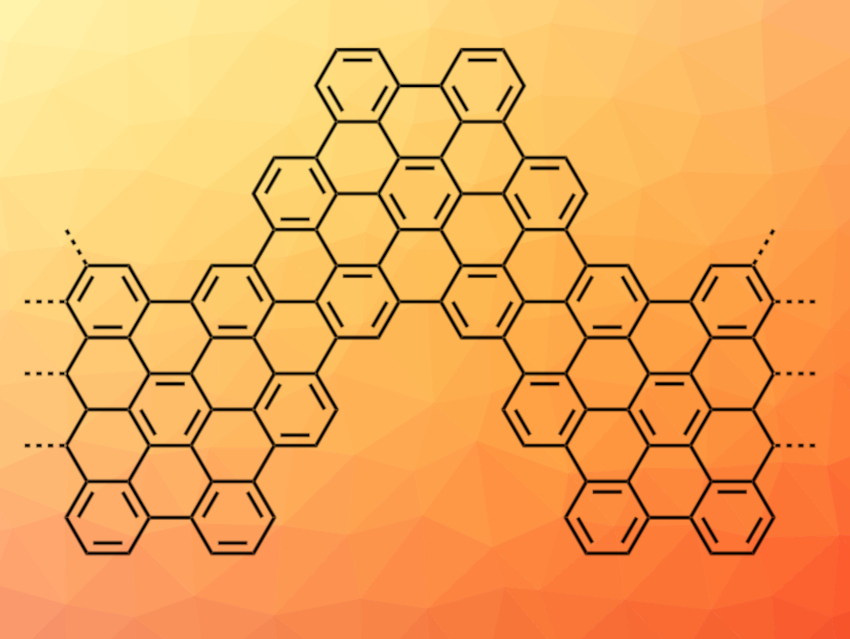Graphene nanoribbons (GNRs) are narrow strips of graphene. They can have interesting electronic and optical properties. GNRs can be prepared on surfaces, which makes them easy to characterize with microscopy methods, but limits structural control during the synthesis. Alternatively, they can be synthesized in solution, which improves control over the structure, but makes sample preparation for analysis more difficult.
Felix R. Fischer, University of California and Lawrence Berkeley National Laboratory, Berkeley, CA, USA, and colleagues have developed a hybrid bottom-up approach that combines the advantages of GNR synthesis on surfaces and in solution. The team first prepared a polymeric GNR precursor using, e.g., a nickel-catalyzed polymerization of 6,11-dibromo-1,2,3,4-tetraphenyltriphenylene. The polymeric precursor was then deposited onto Au(111) substrates using matrix-assisted direct (MAD) transfer. The matrix used must be relatively inert and able to undergo sublimation after the transfer. The team chose a pyrene matrix. After the MAD transfer in ultrahigh vacuum (UHV), the samples were annealed at 300 °C to remove the matrix. Further annealing at 420 °C then induced a cyclodehydrogenation, which transformed the polymer precursor into the desired GNRs (example pictured).
According to the researchers, this approach allows the traceless removal of the bulk pyrene matrix. The resulting GNRs are spatially isolated on the gold surface and can be characterized using scanning tunneling microscopy (STM) and spectroscopic methods.
- Synergetic Bottom-Up Synthesis of Graphene Nanoribbons by Matrix-Assisted Direct Transfer,
Ryan D. McCurdy, Peter H. Jacobse, Ilya Piskun, Gr J. Am. Chem. Soc. 2021.
https://doi.org/10.1021/jacs.1c01355




